The best fall flowers to plant for autumnal color in your garden
We asked the experts for their favorite fall flowers to plant – here's what they recommend for an injection of vibrancy
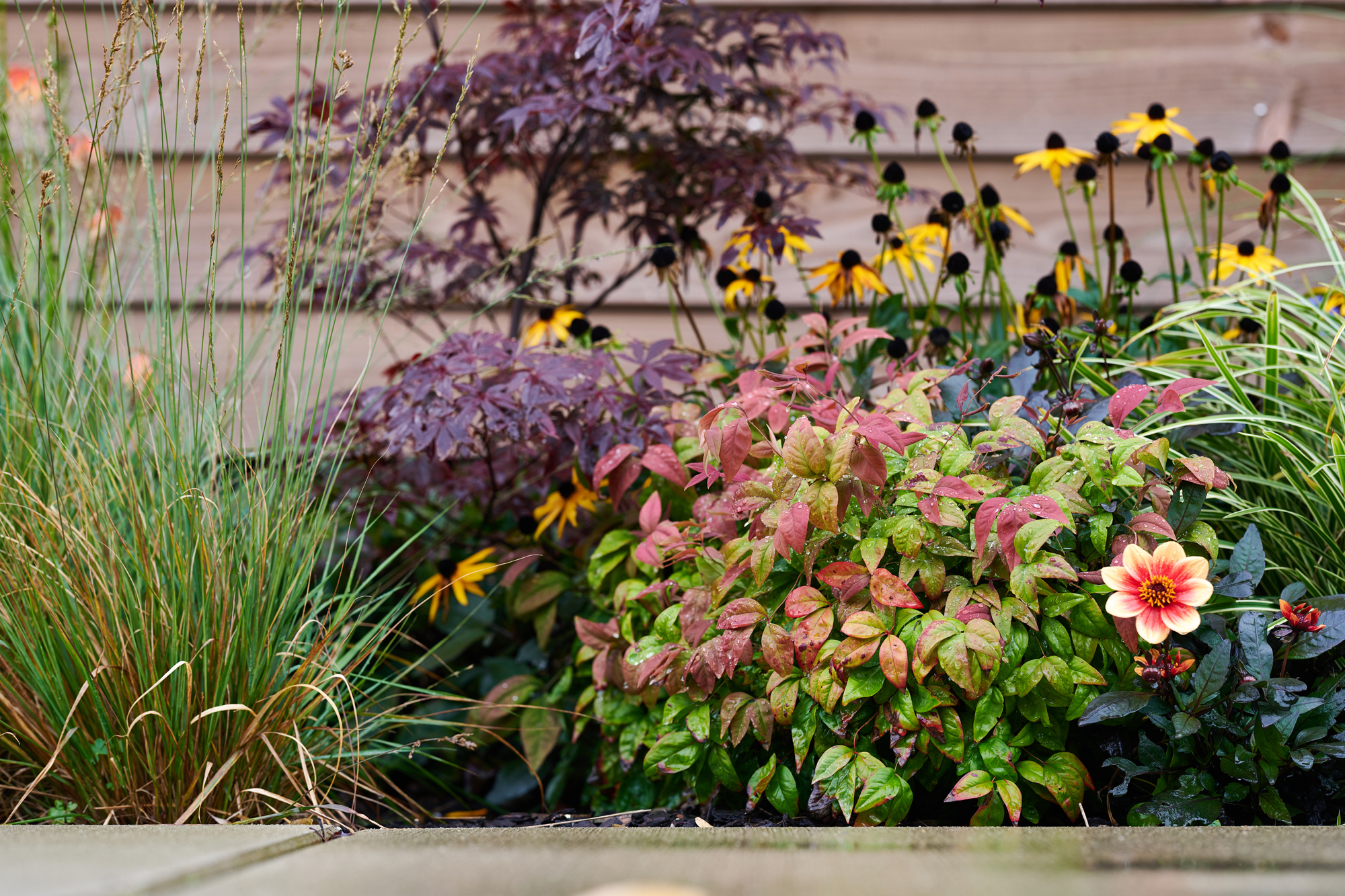

With summer on its way out – and our gardens looking a little, well… tired – it’s no surprise that we’re asking the same question: what are the best fall flowers to plant for a bit of seasonal pizzazz? While we associate blooms with spring, it’s good to know there are actually plenty of garden ideas for adding color as we head into chillier weather.
‘If summer bedding plants are now looking a little frazzled, it might be the perfect time for a welcome boost of autumn color,’ says Sarah Squire, chairman of Squire’s Garden Centres. To help you get your garden up and running again, we’ve asked the experts for their favorite flowering plants for this time of year – and their advice for keeping them healthy as we head towards winter.

Ellen is an experienced homes journalist, and as Livingetc's deputy print editor, works tirelessly to pull together the magazine every month. To offer guidance on the best flowers to plant this fall, she spoke to gardening experts for their top recommendations.
What are the best fall flowers to plant?
1. Chrysanthemums
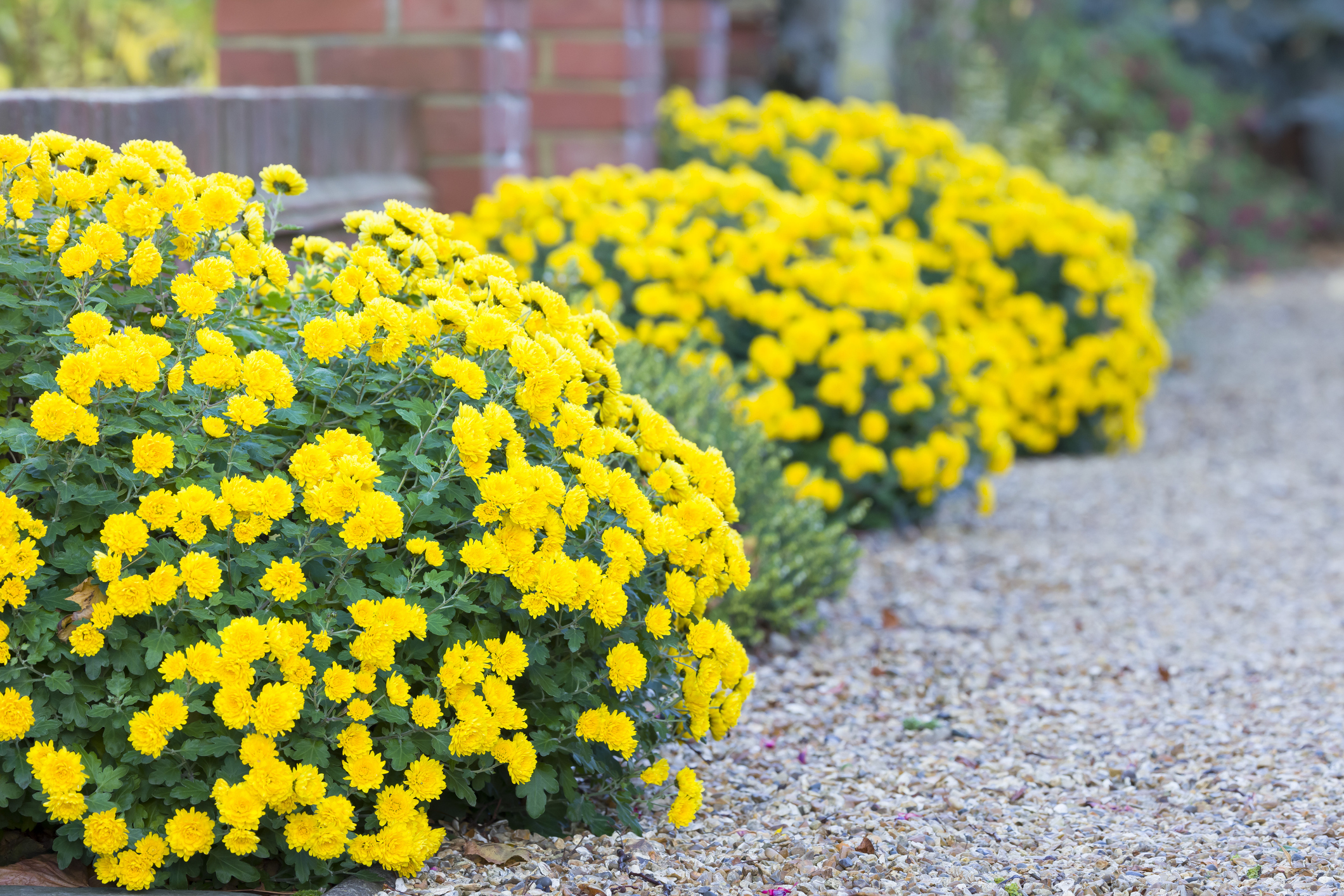
You might have spotted chrysanthemums blooming through summer, but they’re also a good choice for early fall color – and a bit of drama. ‘For something a little larger, chrysanthemums are just the ticket, straight from the nursery and full of buds in autumnal yellows, oranges and reds – or more muted pink and white,’ says Sarah Squire of Squire’s Garden Centres.
Fiona Jenkins, garden expert at Myjobquote.co.uk, agrees. ‘Chrysanthemums tend to bloom through late summer and autumn,’ she says. ‘With a wide range of colors to choose from, they bring fresh vibrancy to your gardens right as your summer blooms start to fade.’ They’ll also make for indoor decoration if you include them in your cut flower garden, too, as Fiona explains: ‘They make beautiful, colorful, long-lasting cut flowers, perfect for adding a bit of color to the inside of your home during the autumn months.’
Chrysanthemums grow best in borders and containers, and thrive in fertile, well-drained soil with good levels of sunshine.
2. Asters
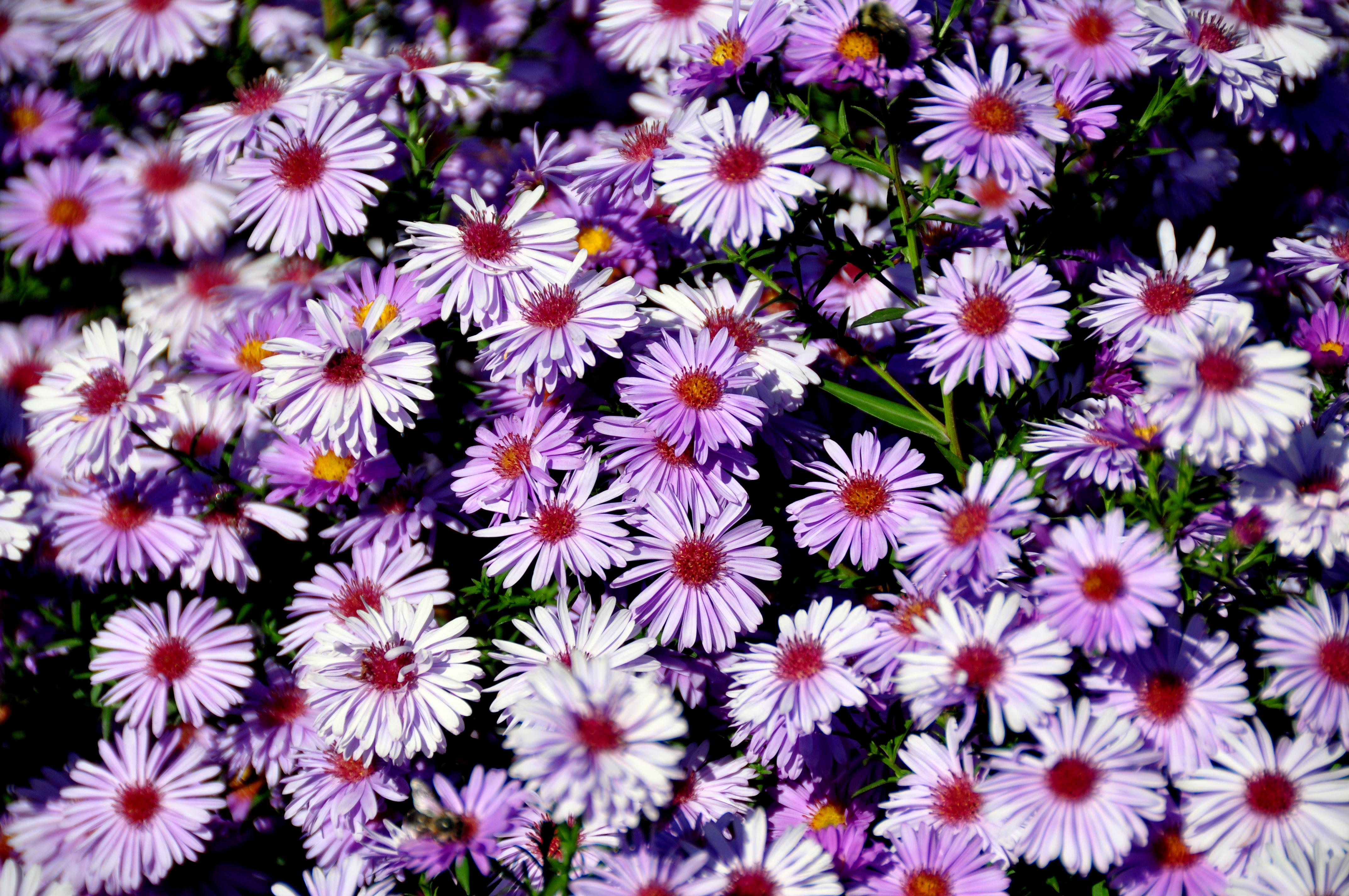
‘For cooler autumn color – pinks, purples and white – go for asters,’ says Liz Blyth of the Duchy of Cornwall Nursery. These fall-ready perennials enjoy a peak flowering season around the end September, which makes them perfect for a bit of late-year color. Their dainty flowers mean they’re an elegant and softening addition to hard landscaping.
‘Asters are one of the prettiest herbaceous perennials for autumn color,’ says Fiona Jenkins. ‘With so many sizes, shapes, and colors to choose from, you can easily create a beautiful, unique flower spread ready for autumn. The Aster x frikartii "Mönch" variety is the finest type of aster. A good tip for keeping them compact and to keep the flowers abundant is to give them the Chelsea chop when May comes around.’
Plant asters in spring or autumn, and keep them in a sunny place in fertile soil.
3. Japanese anemones
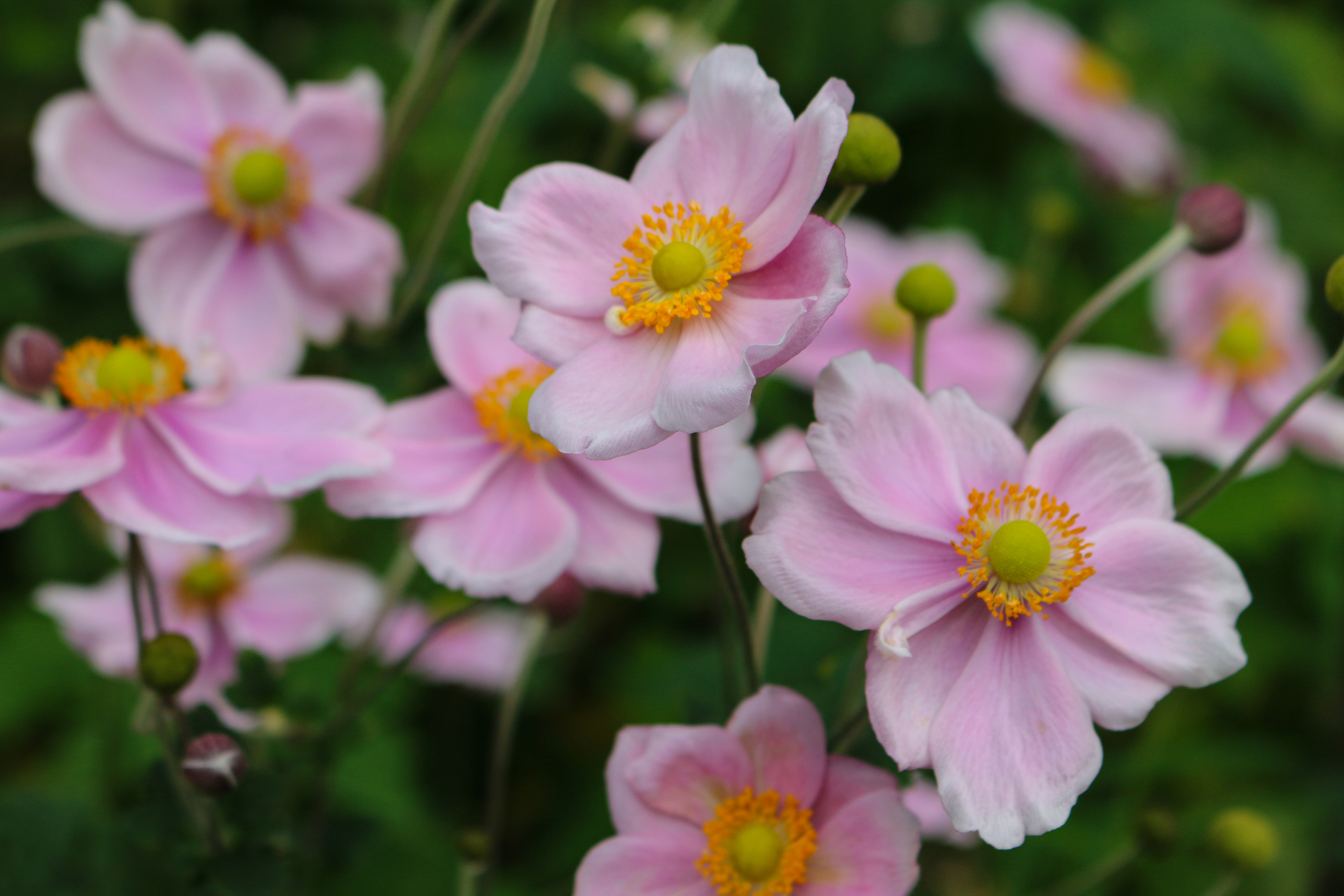
The wispy, delicate flowers of Japanese anemones make them a pretty, informal addition to a border – and they’re fairly low maintenance, too. ‘They’re a trouble-free option for autumn,’ says Heloise Brooke, head gardener at The National Trust's Calke Abbey in Derbyshire, England. ‘They’re also known as windflowers, because they appear to float – they’re very elegant. You don’t need to stake them and they’ll keep growing for ages. If they outgrow their flower bed, simply dig them up.’
‘The stunning structural Japanese Anemones are fantastic perennials for later summer, extending into autumn, with their unique “floating flowers” in pink and white, and with striking foliage too – they make a great impact,’ says Sarah Squire. ‘There are tall and short varieties available, and so they can be used in the back or front of borders – and compact varieties can be used in patio planting.’
Despite their fragile appearance, these hardy plants are perfect for tougher weather, too. ‘This flower can tolerate many growing conditions and flowers late into the fall,’ says Katie Burdett, organic gardener and writer at Growing With Gertie. ‘The dried seed heads provide lovely winter interest when left until spring.’
4. Colchicums
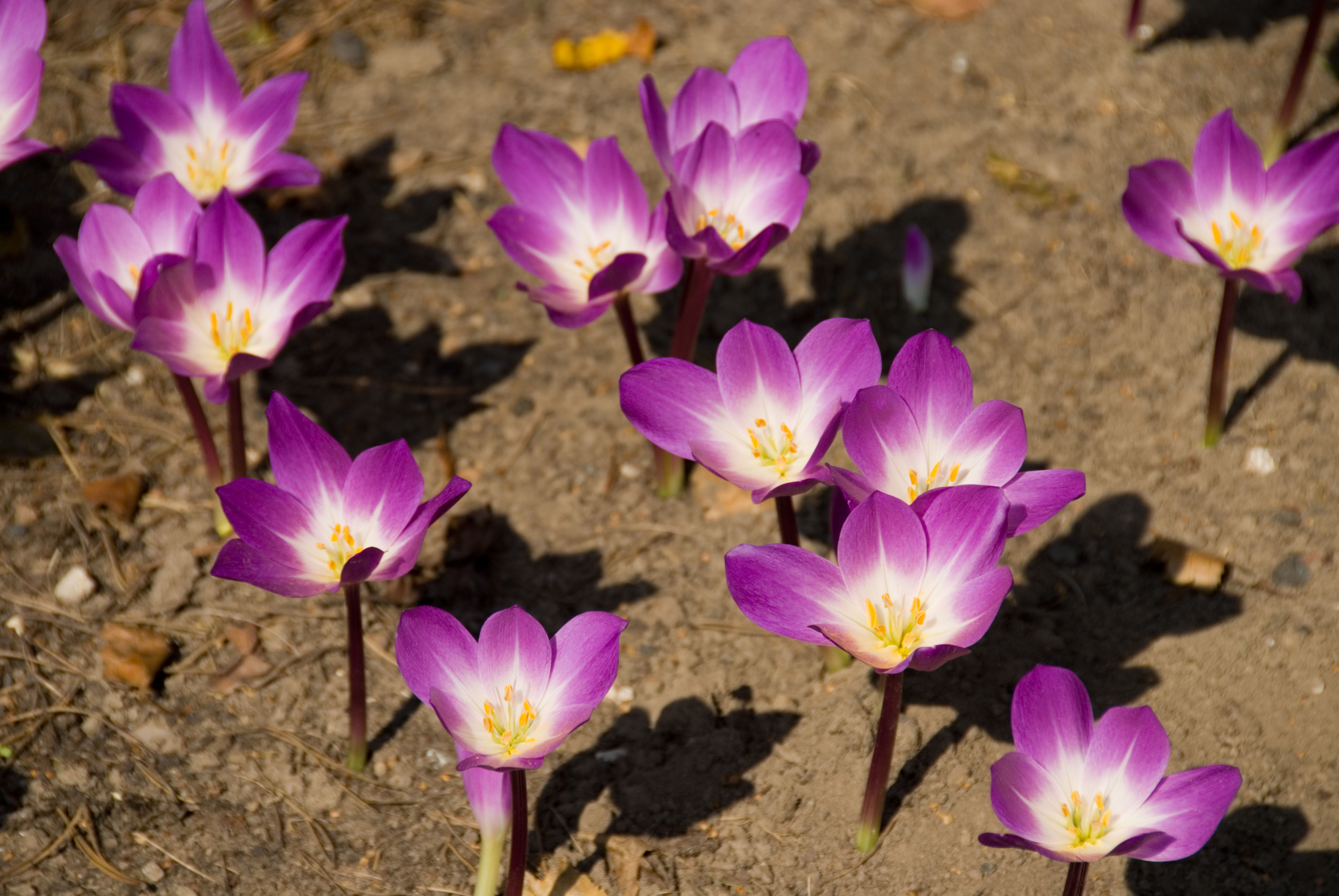
Colchicums, otherwise known as autumn crocuses, are – as the name suggests – great flowering plants for fall. They spread easily and return every year; just keep them happy by placing them in a sunny spot with well-drained soil. ‘These gorgeous flowers bloom brightest in September and October,’ says Fiona Jenkins.
‘The large, striking blooms appear suddenly from bare earth with no leaves. This is where the common name, naked ladies, comes from. The Colchicum “Waterlily” variety has beautiful double flowers with purple and pinkish petals.’
5. Dahlias
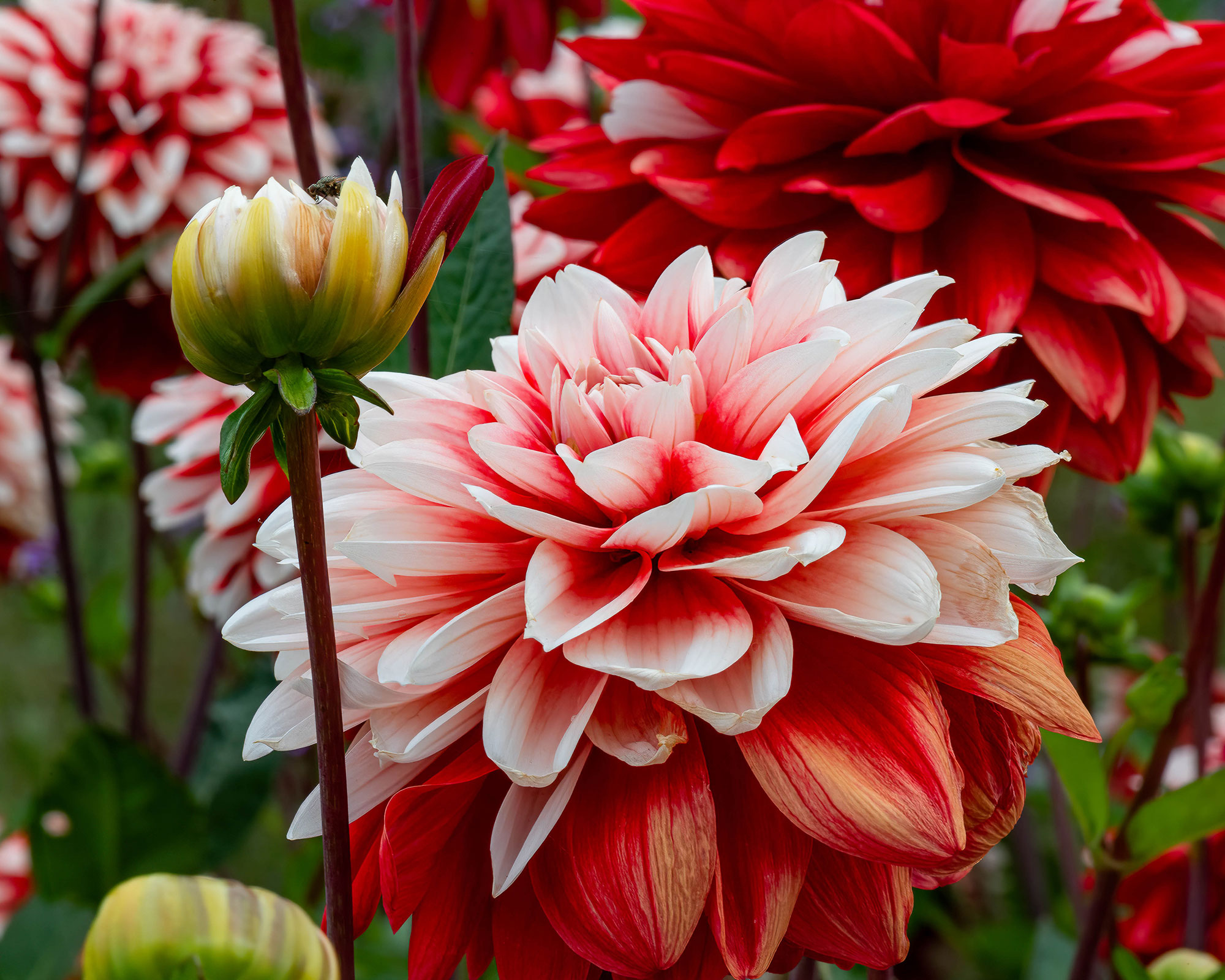
‘Dahlias are a big knockout flower at this time of year,’ says Heloise Brooke. ‘I love their exuberance: you can put different colors together and they’ll always look spectacular. I love orange flowers against purple foliage.’ They do need protecting as the weather worsens, however, and aren't ideal for a shady garden. ‘Dahlias like a decent amount of sun and will bloom from late summer to October or November, when the frosts come,’ adds Heloise. ‘They survive here [at Calke Abbey] if we leave them in the ground, but some people might want to lift and store them in a garage.’
Dahlias add much-needed height to a garden, so for the biggest impact, go as tall as you can, but be aware: ‘you’ll need to stake them well,’ warns Heloise. They can get hit by wind and rain.’ Opt for shorter varieties, which grow to less than a meter, and choose your type of flowerhead carefully: large cactus dahlias are more likely to be damaged, according to Heloise, while less delicate versions like pom pom and waterlily dahlias are hardier.
6. Stonecrops (sedums)
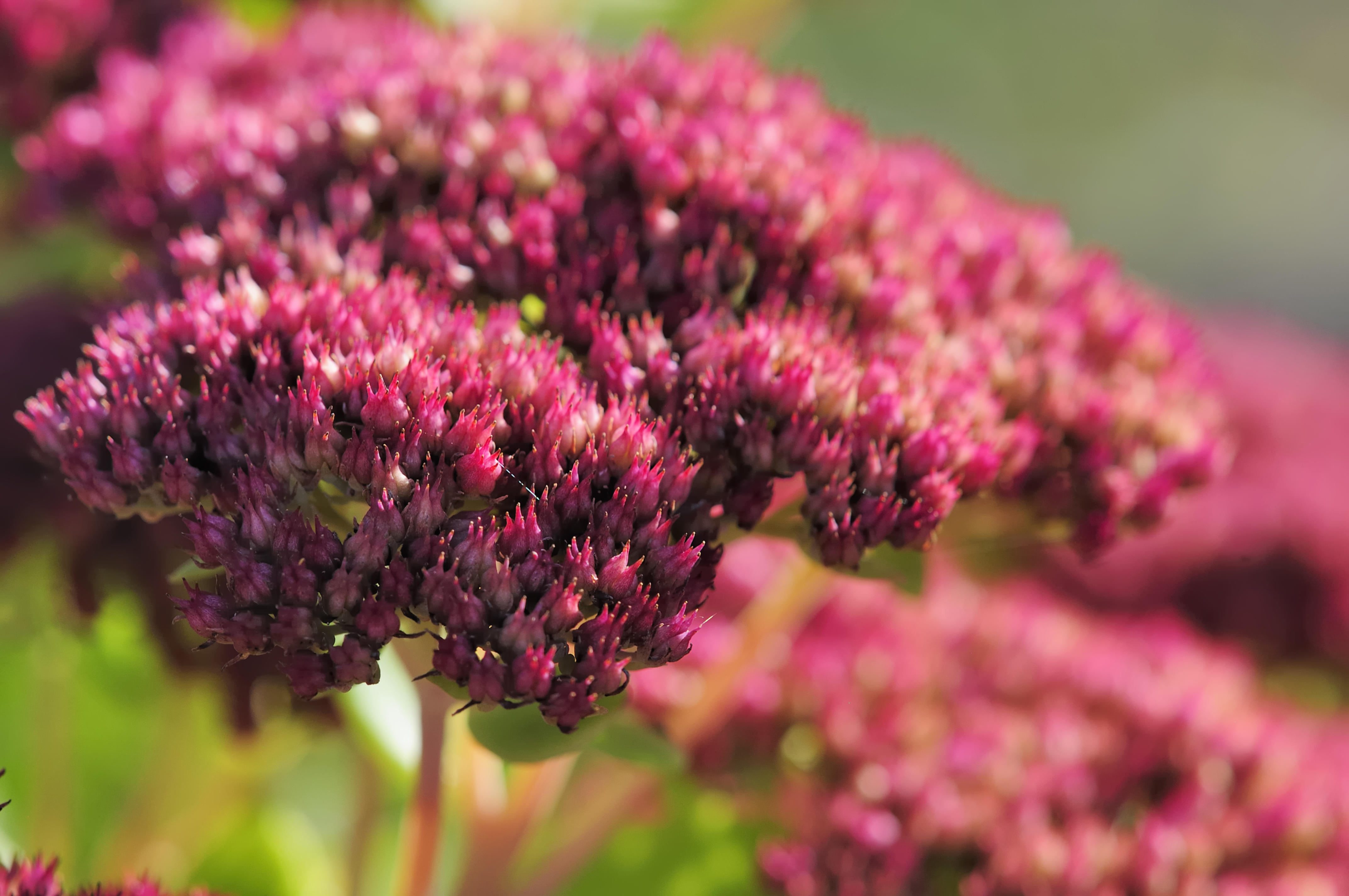
Many of the experts we spoke to mentioned sedums as a great fall flower. ‘Easy to grow, low-maintenance and attractive, sedum or stonecrop comes in many colors to choose from,’ says Katie Burdett. ‘Use flowering sedum as a sturdy filler in your flower arrangements.’ Heloise Brooke recommends the variety “Autumn Joy”, which is at its best in early autumn.
Happily, sedums are also great for low maintenance gardens. ‘Sedum Spectabile is a fantastic easy to maintain plant that is very drought tolerant and attractive to wildlife, particularly bees, with many varieties in whites, pinks, purples and reds,’ says Sarah Squire. ‘Leave the flower heads to go to seed for added winter interest and structure.’
7. Cyclamen
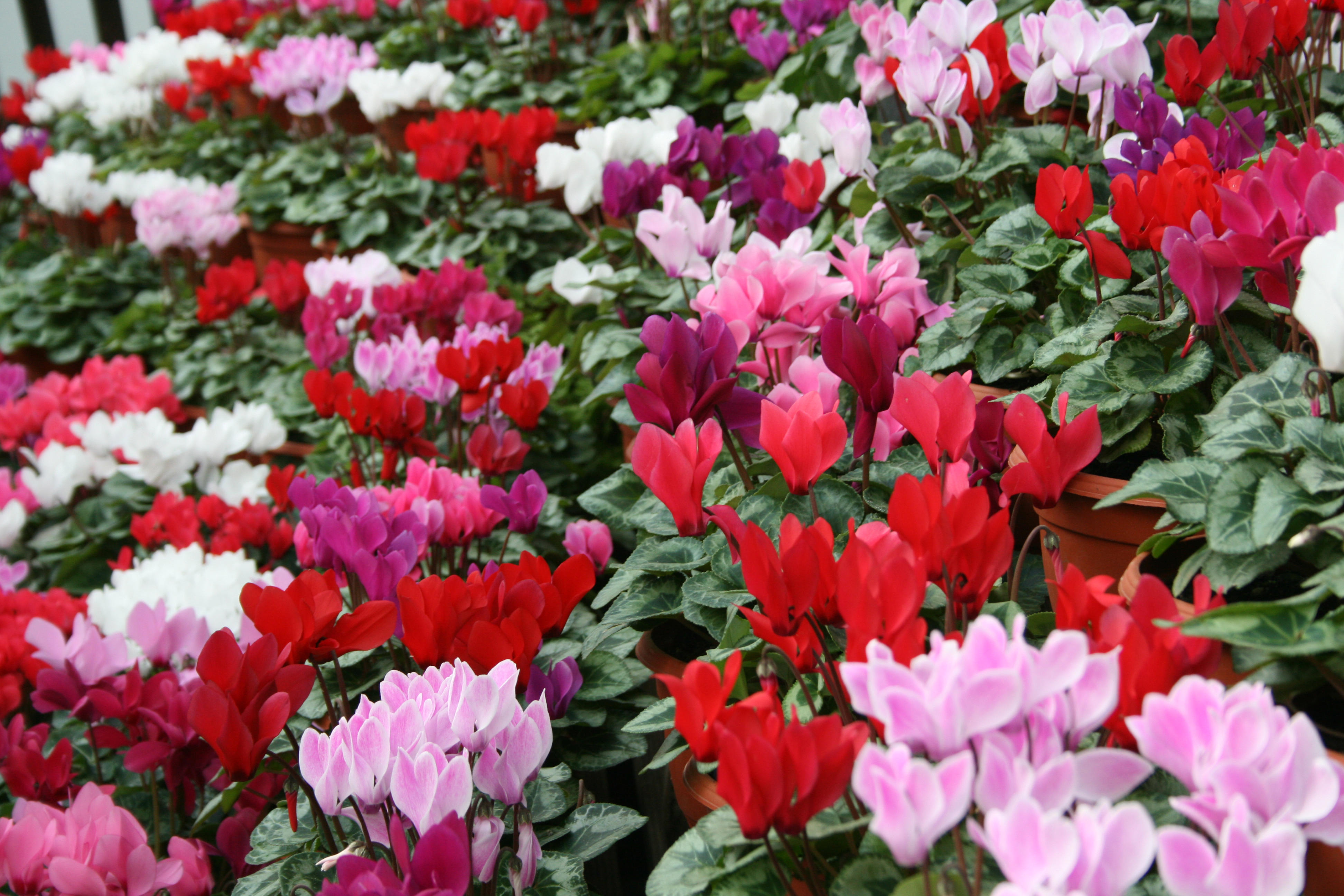
‘For a quick fix, Cyclamen will provide striking color in borders, pots or baskets,’ says Sarah Squire. This hardy autumn plant lies dormant through the summer and emerges in September ‘with beautiful, delicate flowerheads,’ says Fiona Jenkins. ‘This is then followed by an attractive, ivy-like, patterned foliage which continues to provide interest throughout much of winter.’
Cyclamen thrive in shaded areas, so plant under trees and shrubs; doing so will also add vibrancy to darker areas of your plot.
8. Violas and pansies

The deep purple of a pansy is a well-recognized sight, but these flowers – including violas – bloom in a plethora of color, adding brightness to a winter garden. They can withstand colder weather and when planted towards the end of summer, will flower until hard frost arrives – and return in spring. ‘Violas and pansies will flower well into the autumn, are low maintenance and offer a long flowering choice,’ says Sarah Squire.
Liz Blyth of the Duchy of Cornwall Nursery lists them amongst her favorite fall choices. ‘Top picks for autumn bedding are violas and pansies, cyclamen and ornamental brassicas (cabbages and kale),’ she says. ‘They are all perfect for tubs and baskets full of cheerful color, especially if you can frequently deadhead.’
9. Rudbeckia

Easy-to-care-for rudbeckia is a favorite amongst gardeners. ‘Echinaceas, Rudbeckias and Crocosmias are all late summer/autumn flowers mainly sitting at the warmer end of the color spectrum: warm reds through to yellows,’ says Liz Blyth. ‘They sit well together with ornamental grasses for a prairie style planting scheme. All will thrive in well-drained soil in full sun.’
‘There are many perennial and native varieties of rudbeckia to choose from,’ adds Katie Burdett. ‘Rudbeckia prefers full sun and prairie-like conditions. Give it a healthy scoop of compost to ensure its success.’
What are the best fall flowers for pots?
Many fall flowers are ideal for container gardening: planting in pots and containers gives them the strongest chance of surviving through harsher weather. Pansies need to be planted close together, so do well in pots, and chrysanthemums are also popular options. ‘Chrysanthemums are great for freshening up outdoor containers and add a nice pop of color that match the colorful autumn leaves,’ says Katie Burdett.
Asters can also be grown successfully in containers, so long as the soil is well-drained and the pot isn’t too large; they are prone to root rot. The tall, slim perennials goldenrods can also be planted in pots in fall and grow fairly quickly, while heleniums – with their vivid, daisy-esque flowers – are also worth planting, though they will die back over winter.
When should I plant fall flowers?
Most fall flowers require a bit of forward planning, but if you’ve timed it wrong, don’t worry – you can still plant now to ensure a good crop of color next year. ‘Sowing your flowers in fall will ensure that they bloom within the following year,’ says Nastya Vasylchyshyna, resident botanist expert for plant identification app NatureID. ‘These seedlings will be hardy and strong, which means they’ll be able to overcome early spring frosts and bloom two to three weeks earlier than the flowers sown in spring. They’re also less likely to be susceptible to diseases.’
If you want your plants to bloom in fall, Nastya recommends planting them in spring or early to midsummer. ‘If you sow them in fall, shortened daylight hours and cold temperatures make flowering during the same season unlikely – not to mention that even mature seedlings will require around three to four weeks to establish,’ she warns. ‘Sowing during this time of the year is usually done in countries with a warmer climate, where there is enough sunlight during winter and the temperature doesn't drop below 53–59ºF (12–15ºC). In this case, fast-growing plants can bloom within one-and-a-half to two months.’ Among her favorite plants to sow in fall are lupins and peonies.
Plus, now is the best time to plant bulbs for spring. According to the Royal Horticultural Society, spring-flowering bulbs like crocus and hyacinth should be planted by the end of September, summer-flowering lilies, alliums and crocosmia by October, and tulips by November.
Be The First To Know
The Livingetc newsletters are your inside source for what’s shaping interiors now - and what’s next. Discover trend forecasts, smart style ideas, and curated shopping inspiration that brings design to life. Subscribe today and stay ahead of the curve.

Ellen is deputy editor of Livingetc magazine. She works with our fabulous art and production teams to publish the monthly print title, which features the most inspiring homes around the globe, interviews with leading designers, reporting on the hottest trends, and shopping edits of the best new pieces to refresh your space. Before Livingetc she was deputy editor at Real Homes, and has also written for titles including Homes & Gardens and Gardeningetc. Being surrounded by so much inspiration makes it tricky to decide what to do first in her own flat – a pretty nice problem to have, really. In her spare time, Ellen can be found pottering around in her balcony garden, reading her way through her overstacked bookshelf or planning her next holiday.
-
 My 10 Favorite Designs at Milan Design Week 2025 — Out of the Hundreds of Pieces I Saw
My 10 Favorite Designs at Milan Design Week 2025 — Out of the Hundreds of Pieces I SawThere is a new elegance, color, and shape being shown in Milan this week, and these are the pieces that caught my eye
By Pip Rich
-
 Iridescence Is Chrome’s More Playful, Hard-to-Define Cousin — And You're About to See It Everywhere
Iridescence Is Chrome’s More Playful, Hard-to-Define Cousin — And You're About to See It EverywhereThis kinetic finish signals a broader shift toward surfaces that move, shimmer, and surprise. Here's where to find it now
By Julia Demer